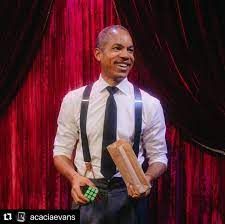Consumer Behavior
What Do Marketing and Magic Have in Common?
Marketing, like magic, entreats us see things we might not otherwise.
Posted May 19, 2023 Reviewed by Tyler Woods
Key points
- Learning across borders is fascinating and can be magical.
- Magicians are masters at capturing and holding attention, and telling stories. What can we learn?
- Magicians know how to grab an audience by the lapels and hang on.
When someone makes a comment from one field or discipline that helps enlighten another, that’s crossing creativity borders. And sometimes a little magic can help.

A few weeks ago, my family and I went to The Magic Castle in Hollywood, California, a 60-year-old performance site for magicians. We saw three magicians the night we visited—from the U.S., from Norway, and from Mauritius/France. This is not what I think of as traditional magic: no women sawn in half, Houdini water dunks, or animals yanked out of hats. These tricks were subtle—a change of clothing in front of our eyes, card tricks, and solving the Rubik’s cube without looking.
At the first show, I lucked into a seat next to a magician who would perform later in the night. Of course, I wanted to know all about how he got into the field. William Watt (the magician from Paris and Mauritius) explained that his parents wanted him to go into business, so he studied marketing, but just couldn’t stick with it, so he went into magic.
“But isn’t marketing just another form of magic?” I thought. Marketers try to get us to see things we cannot (an experience, how a piece of software might work, a future state of a better us). And don’t good books or films or music do the same? They help us “see” something that may not really exist? If so, then how do they do it? That’s where the magicians excel. I took away a few lessons.
First, these folks know how to grab an audience by the lapels and hang on. Each of them, within ten seconds, captured our attention and never let go. Sometimes, it was with self-deprecating humor. In William’s case, he drew us in by asking for a sparkly diamond ring from an audience member. Then he snapped it into a padlock and handed it back to a now-nervous audience member. We were captivated.
Next, these magicians not only captured but held attention. There’s a famous (to nerdy professors like me) article from the 1880s about “the measure of fidget.” If you can keep a room of people from fidgeting, you know you have their attention. Great marketers, filmmakers, and authors grab attention and never let it go during the course of an ad, sales pitch, or film. With each trick, audiences sat statue still, watching and, of course, trying to figure out “how he did that.”
Third, the magicians used different approaches in their acts. Some offered a collection of very cool tricks. But William seemed to be a storyteller throughout the whole act. After taking the diamond ring, he continued with various tricks that seemed to flow from one to the next, including solving a Rubik’s cube inside of a paper sack. The act’s climax involved asking audience members to call out numbers that he entered into his phone calculator, which eventually added up to a four-digit number, which, you guessed it, was the code to the padlock holding the ring.
He closed with a moving talk about the need to take care of and love each other. (That, too, fed into the act but I’ll not reveal how). The show started and ended with a love story, and felt like a journey in the process, just like a good film or book.
After the show, he kindly took a few more minutes to chat (with my future daughter-in-law, the owner of the ring). At one point he said, “I’ll be right back,” and left to get his phone. As we chatted, he tapped it and, abracadabra, out slid a business card from inside the phone. Now, how did he do that?


